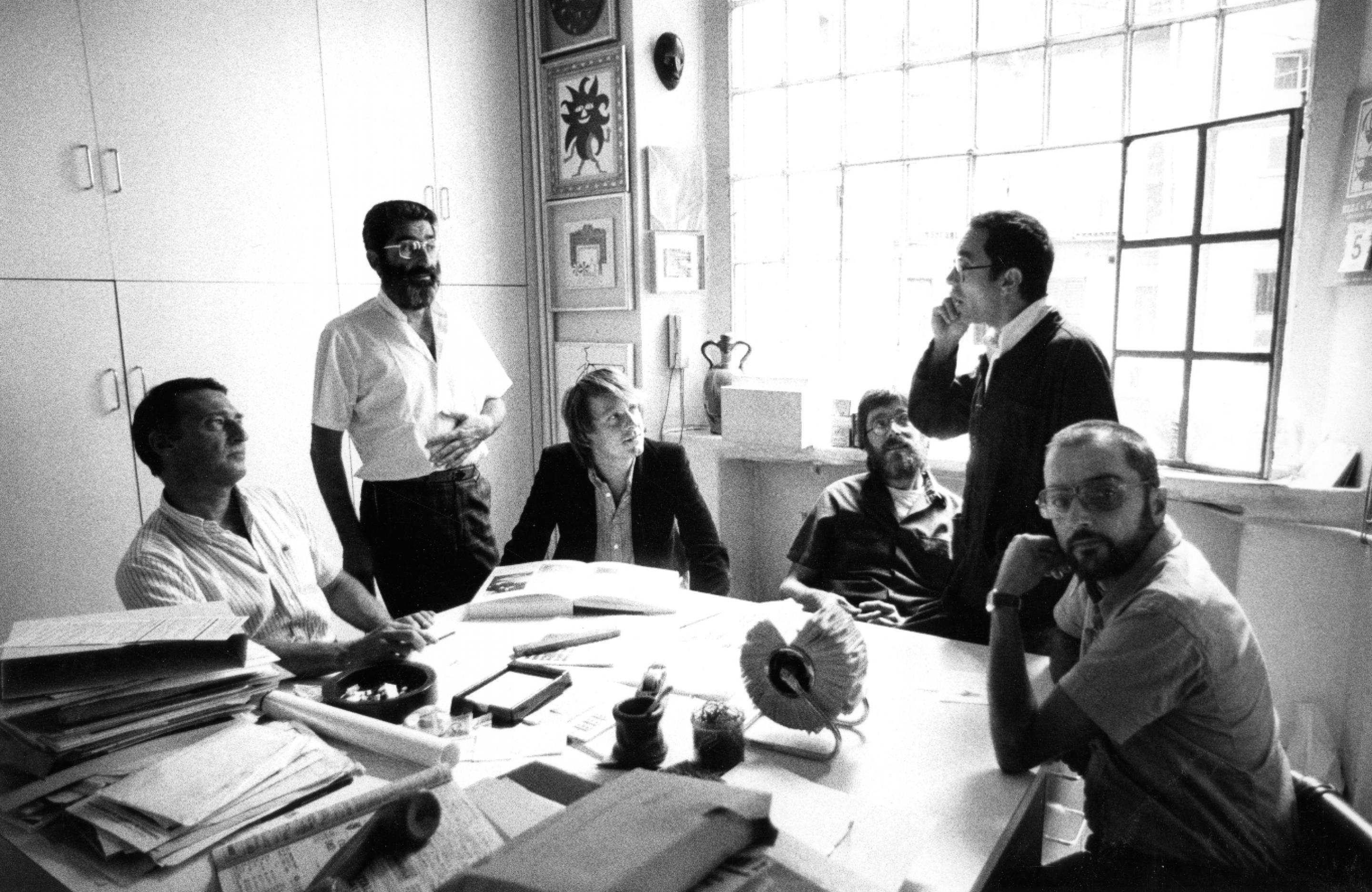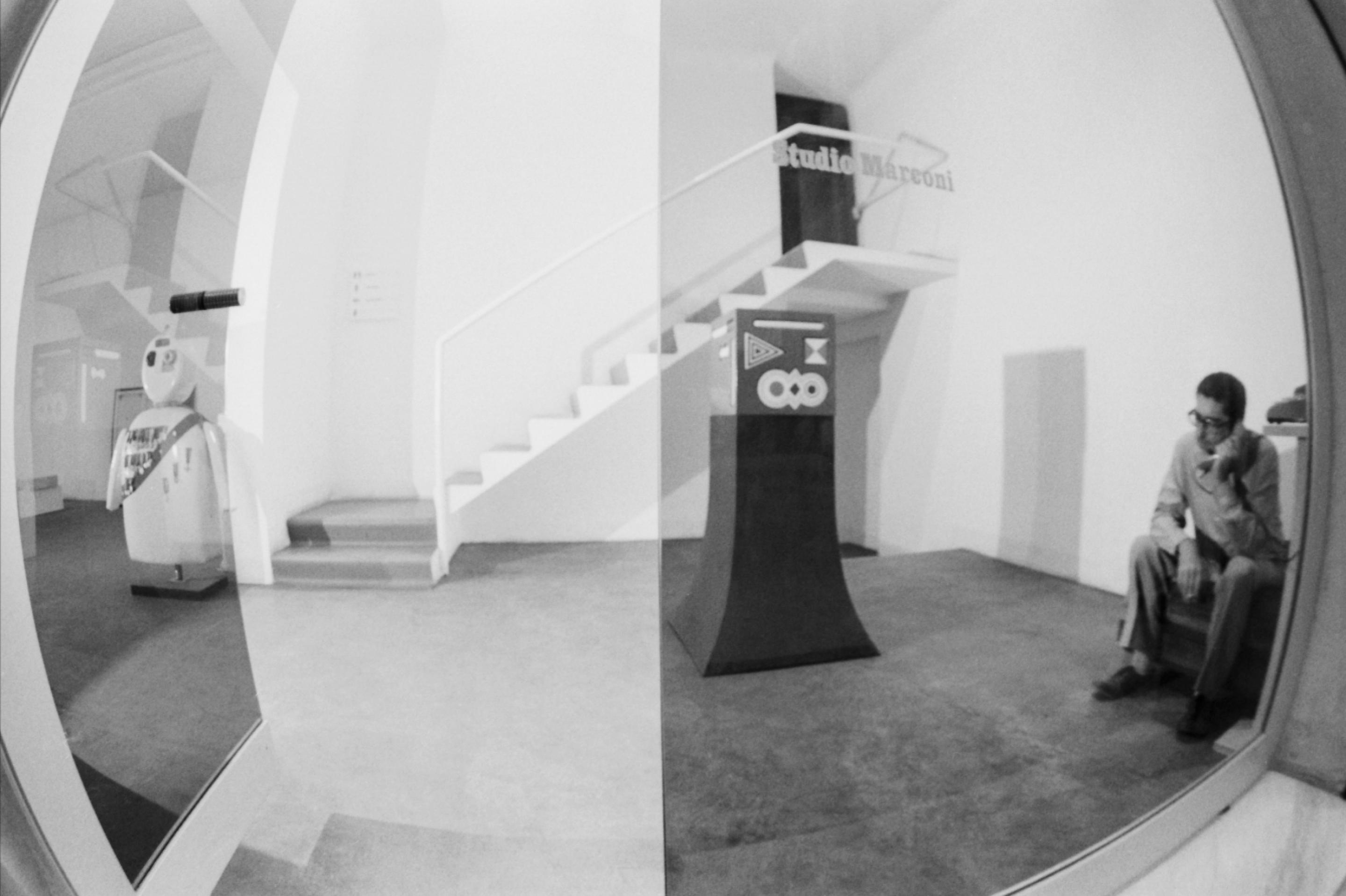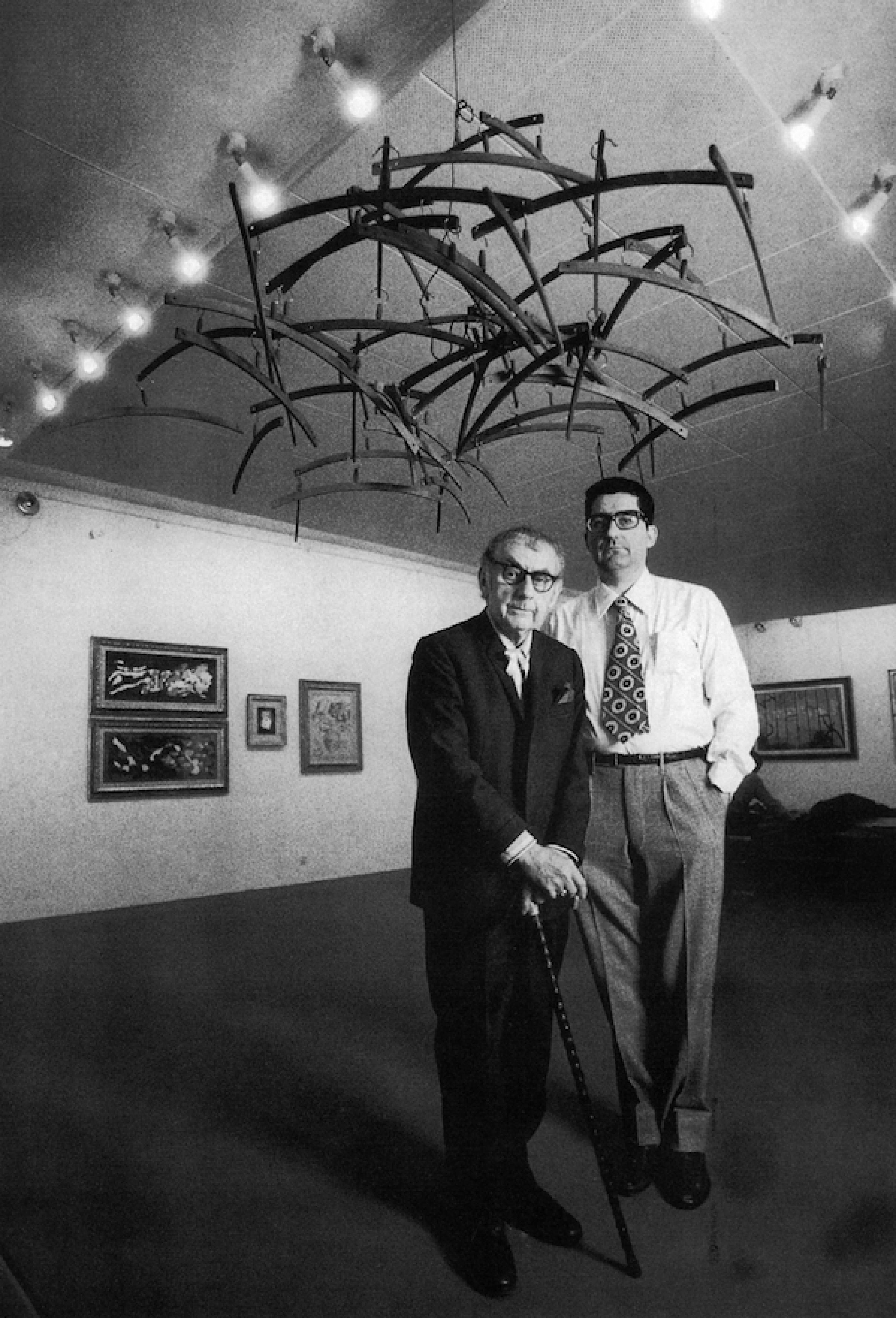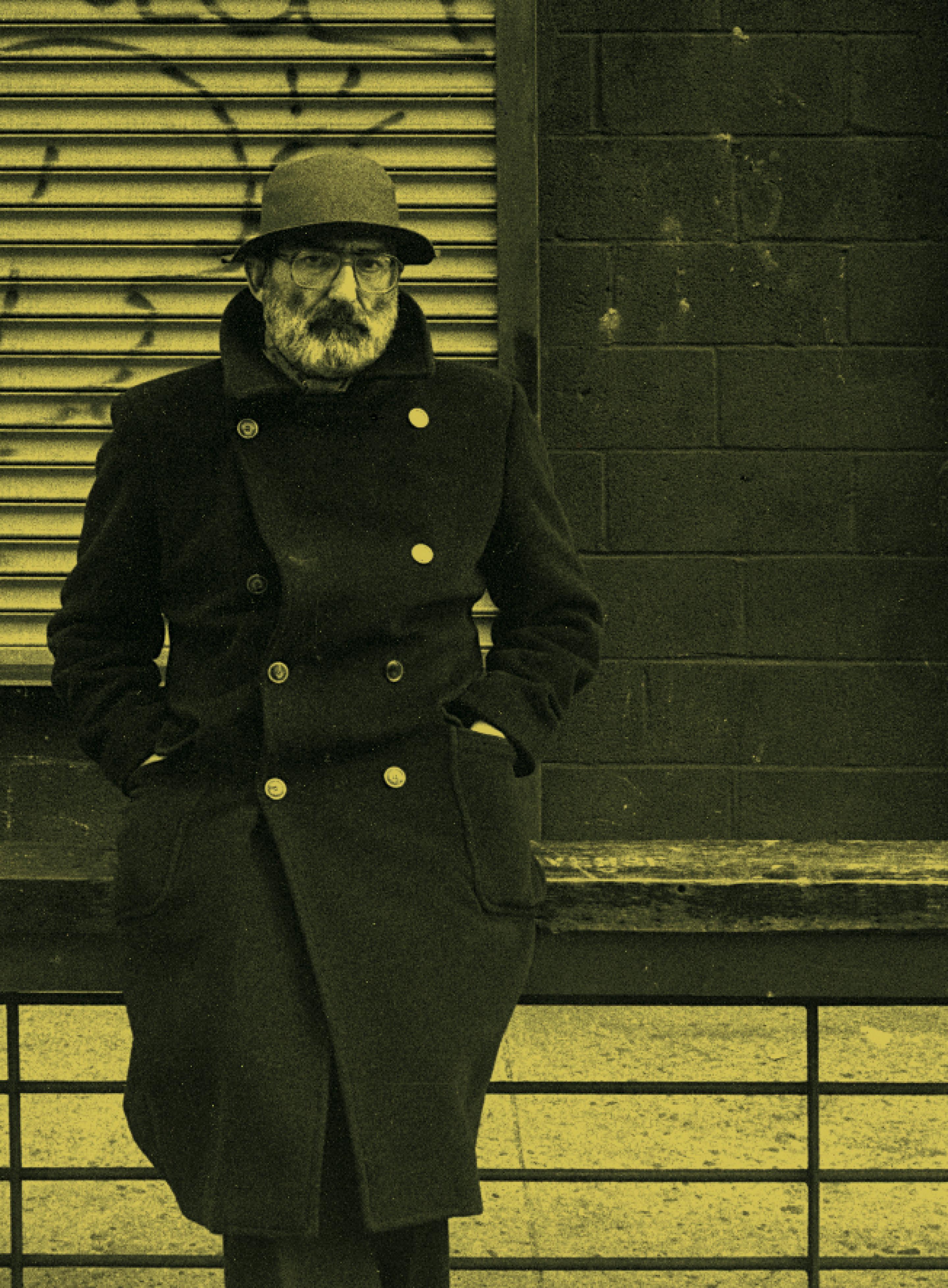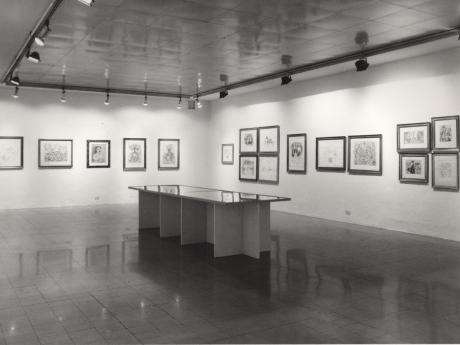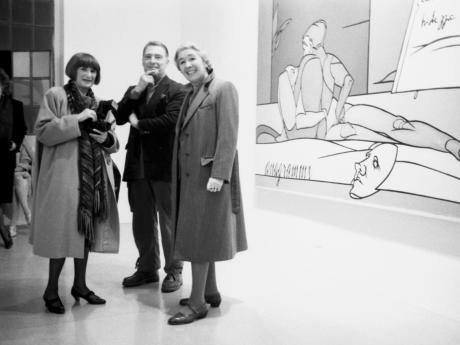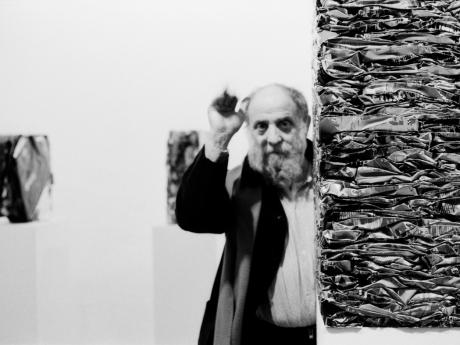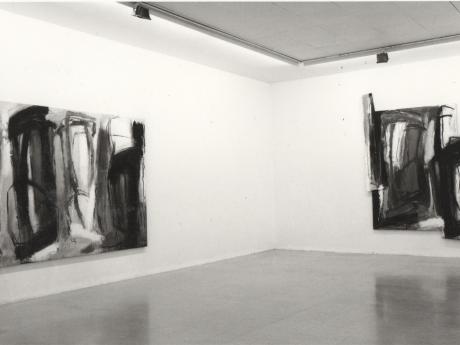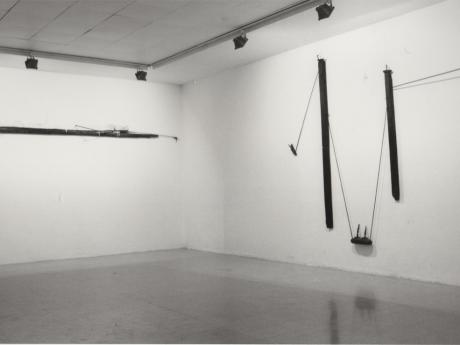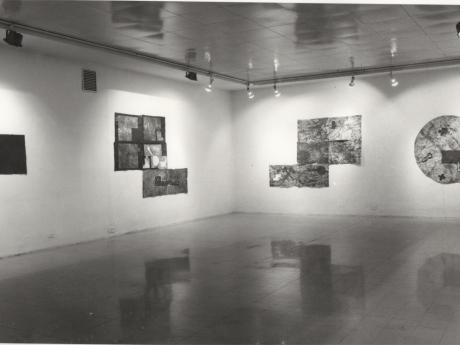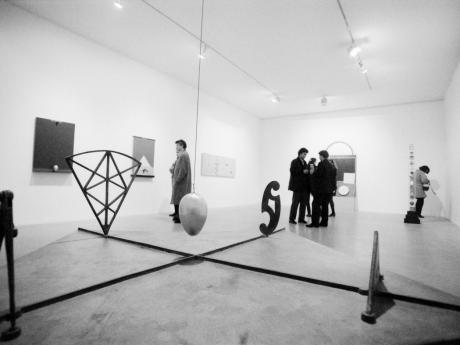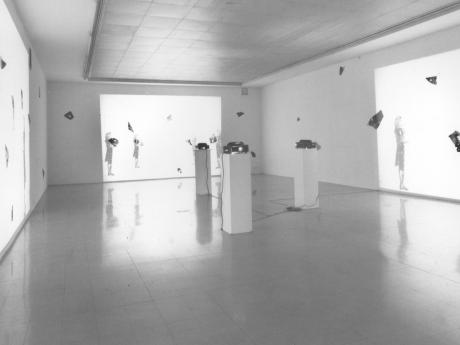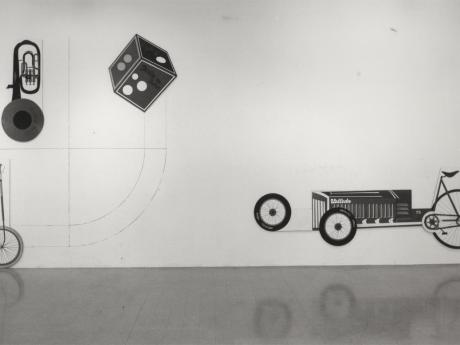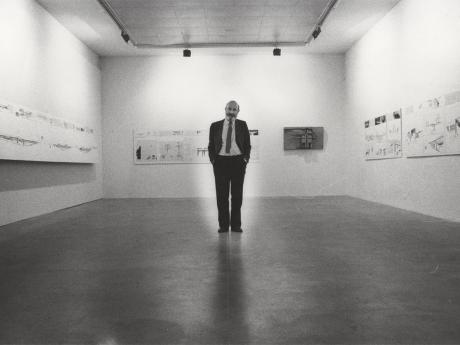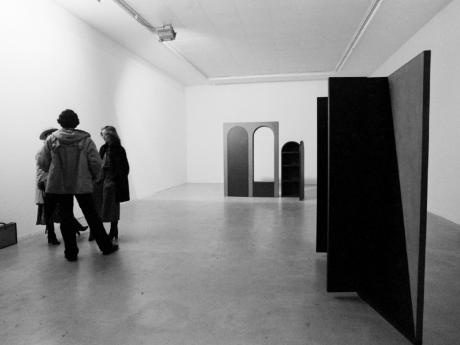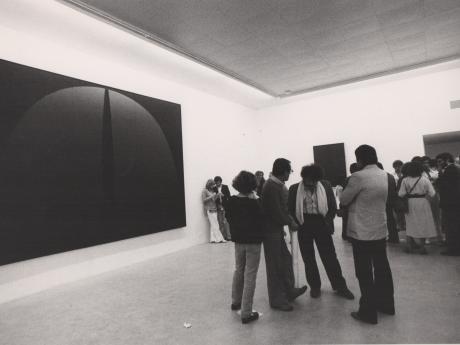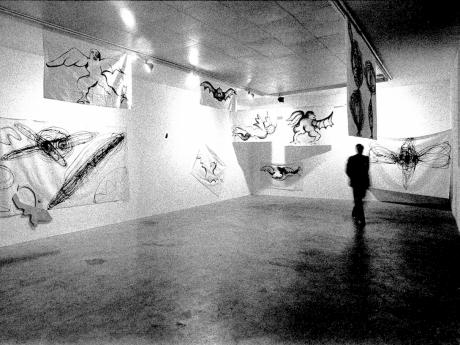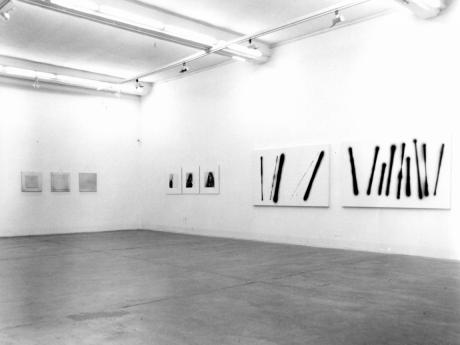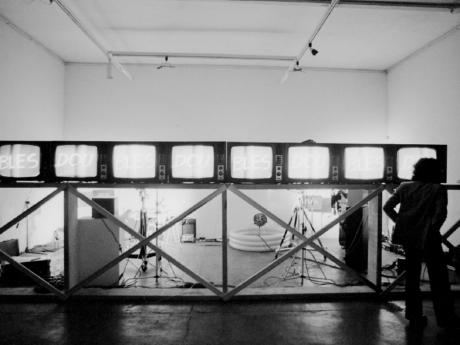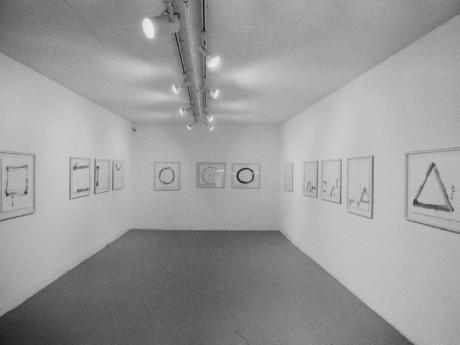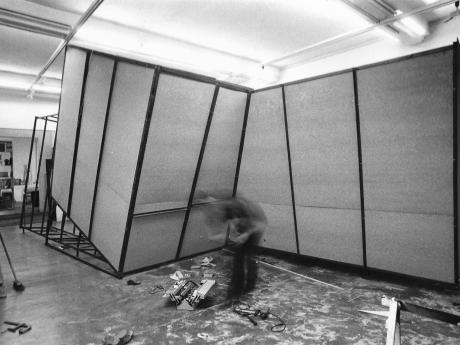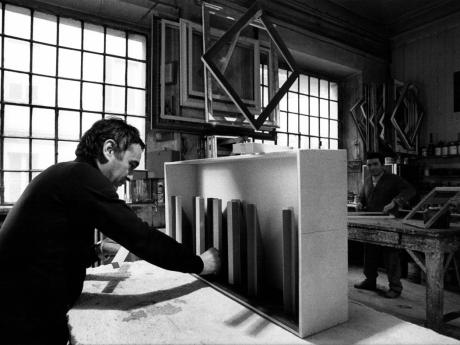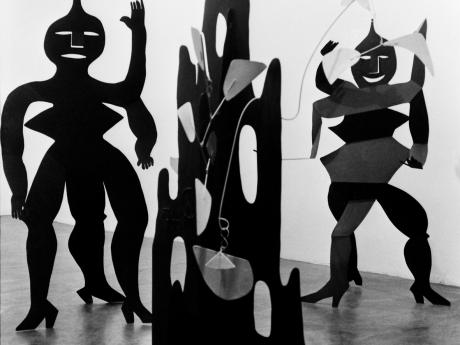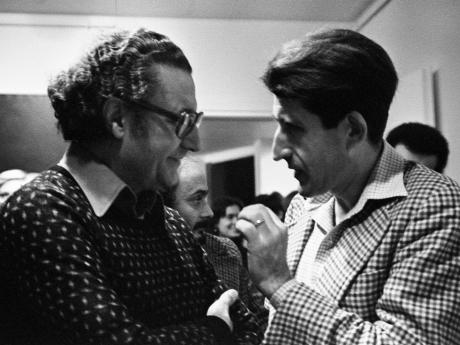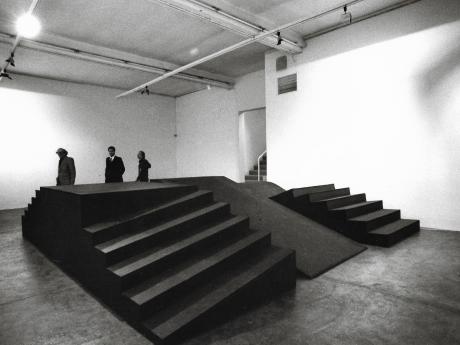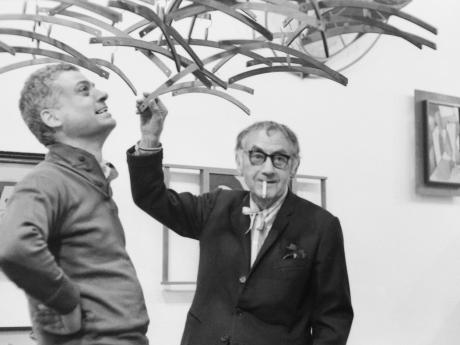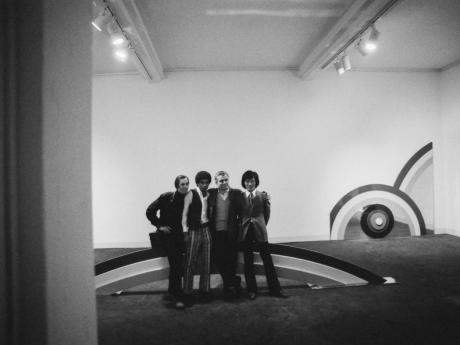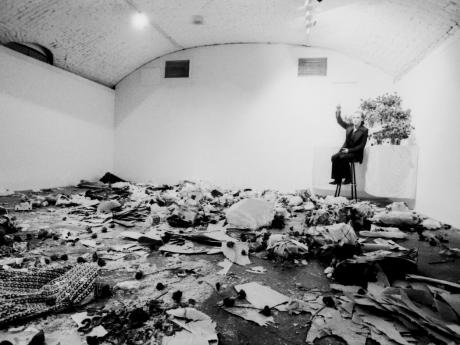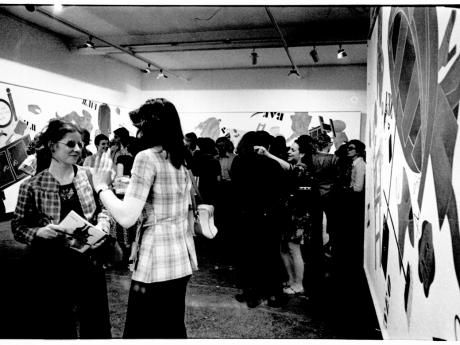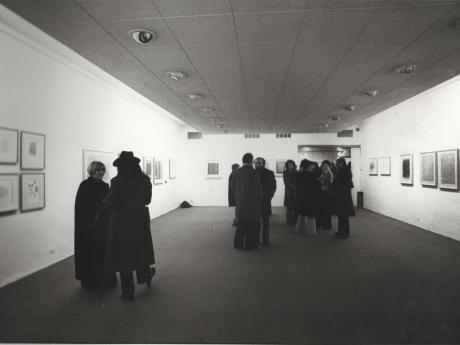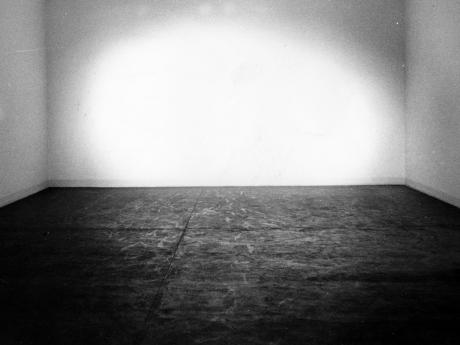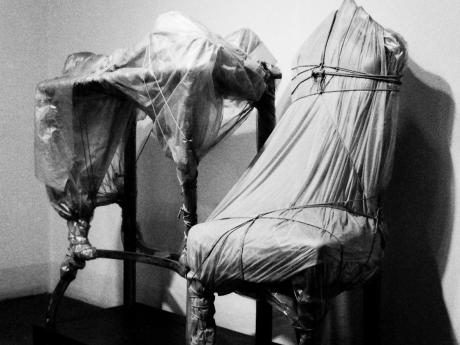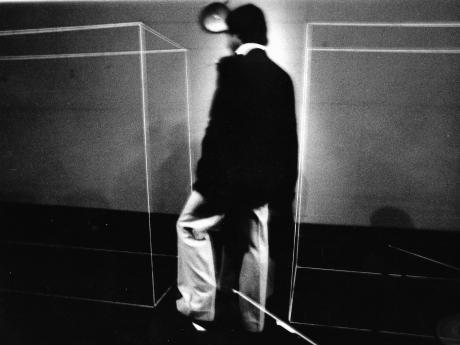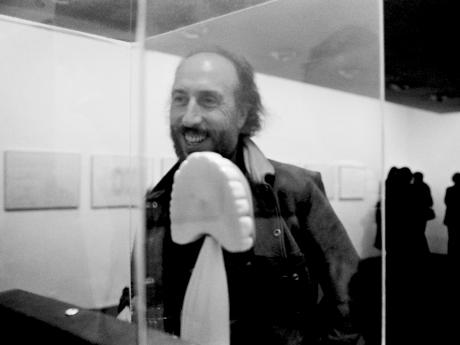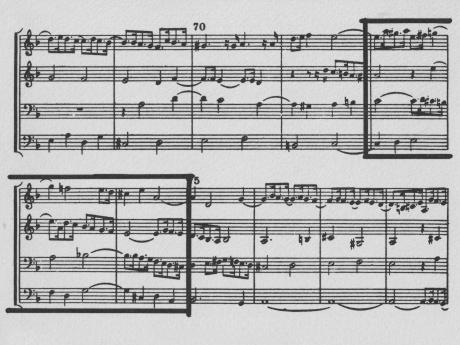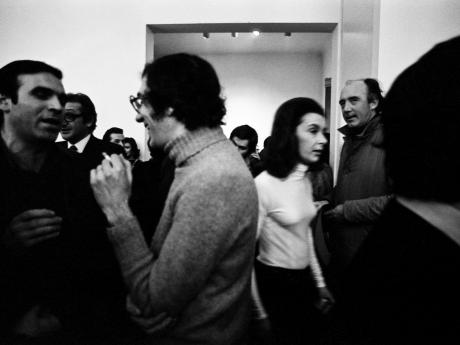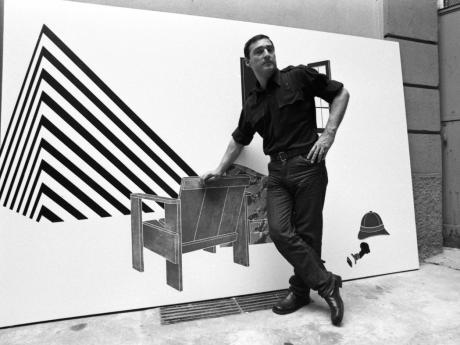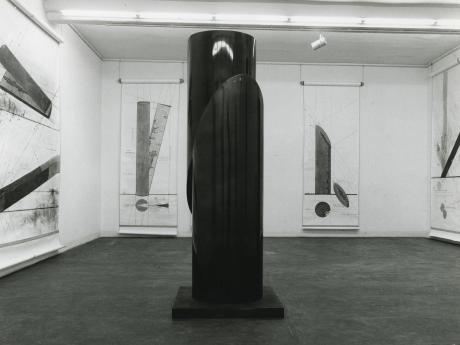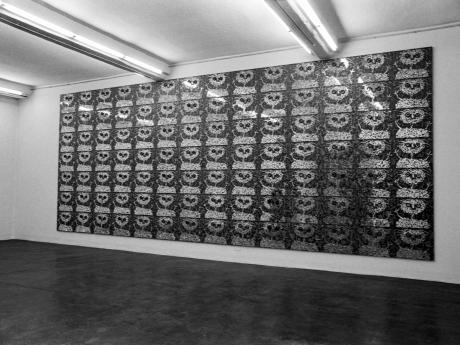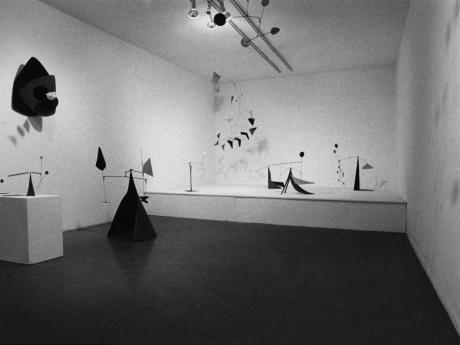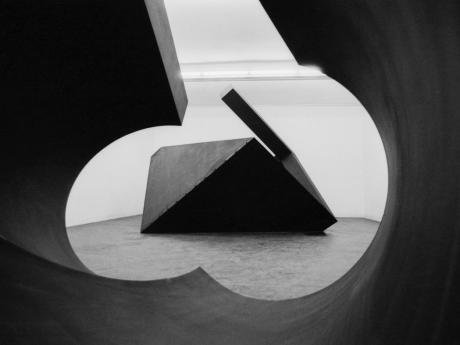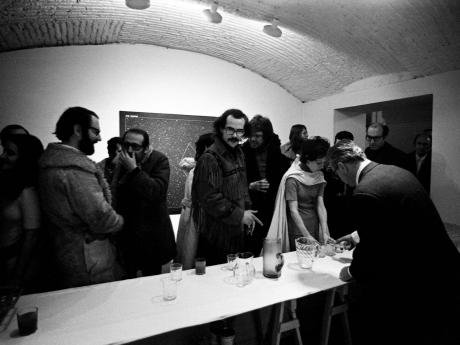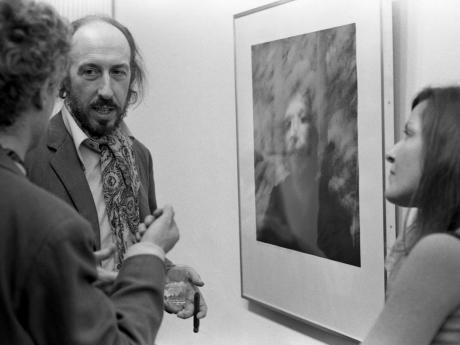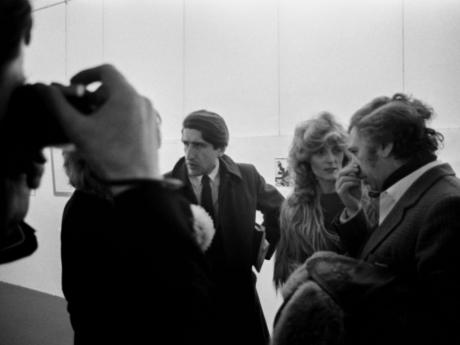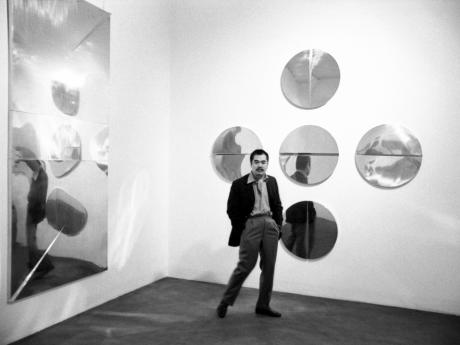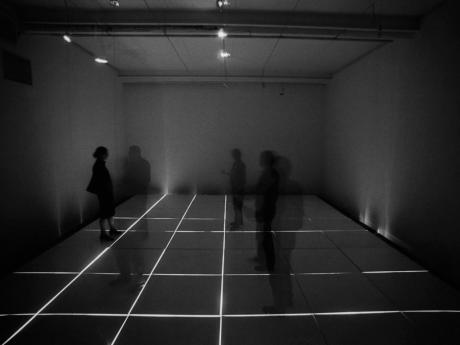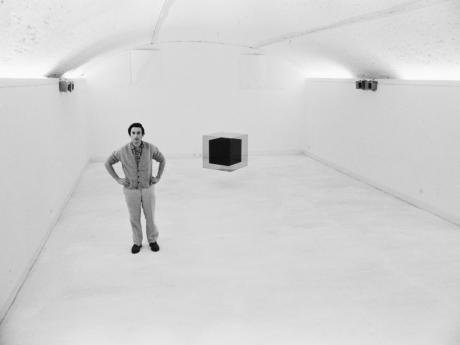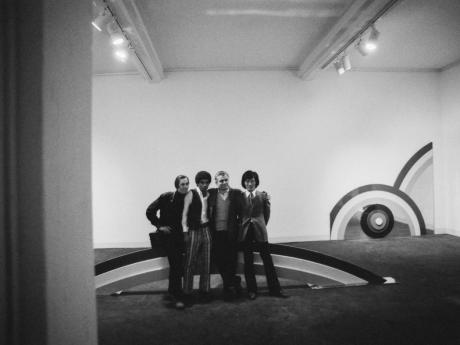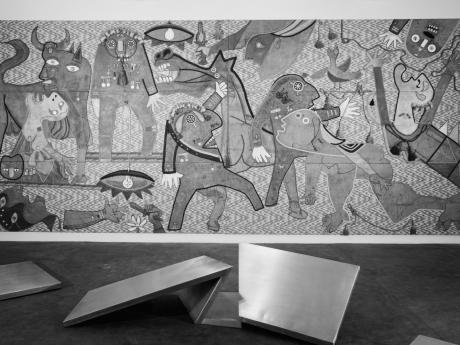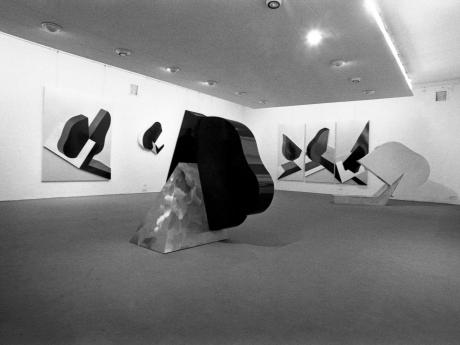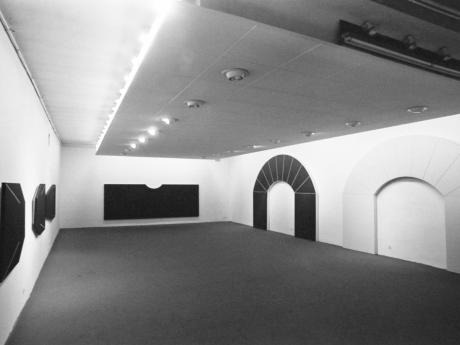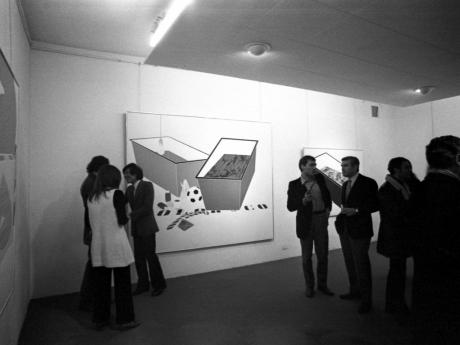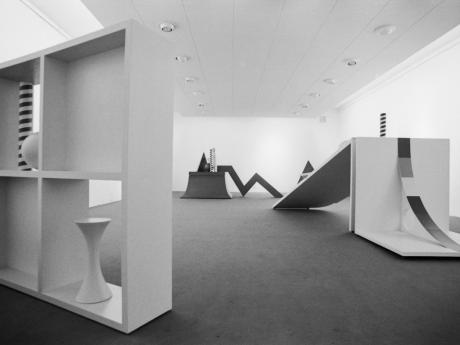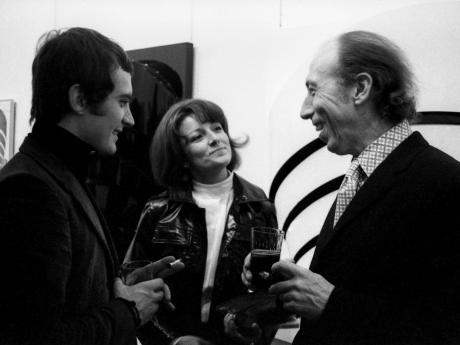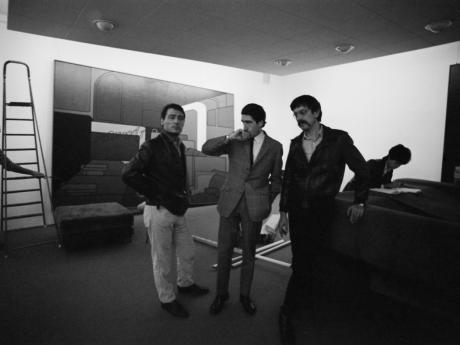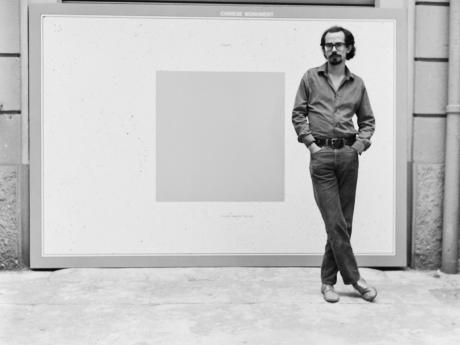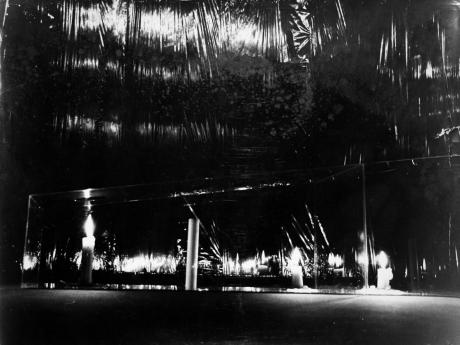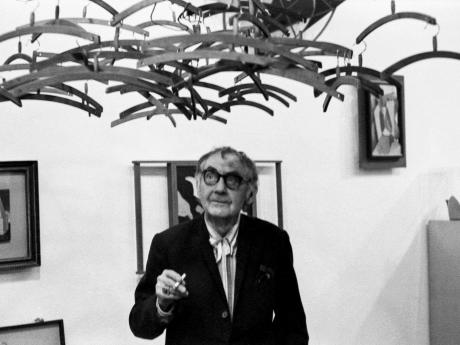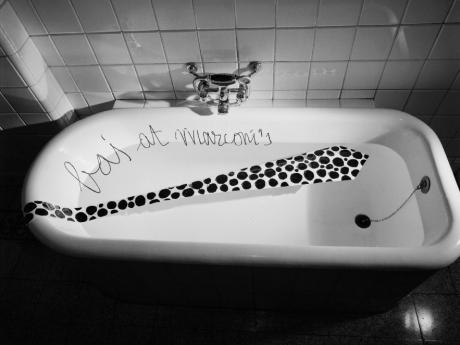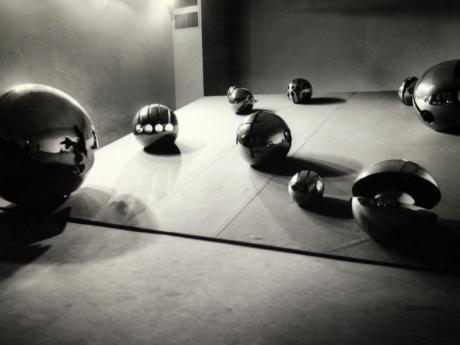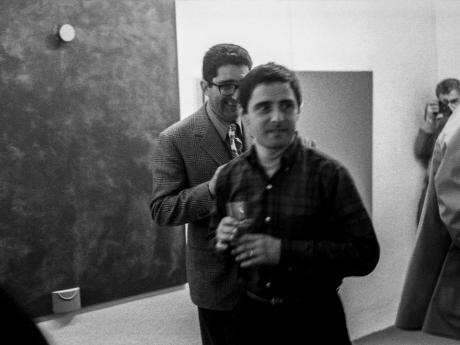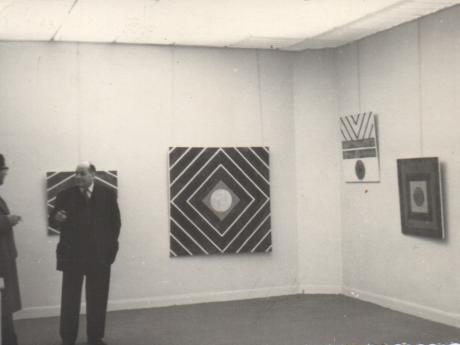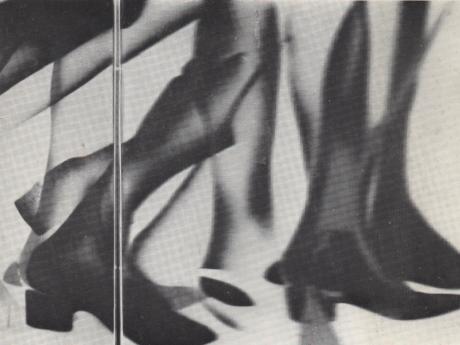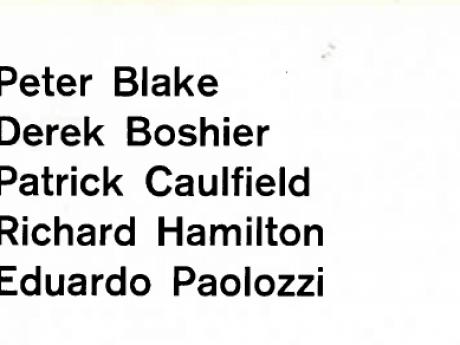Born in 1930 in Milan, Giorgio Marconi entered the world of art in 1965, leaving his medical studies to open his first exhibition space, Studio Marconi, in Via Tadino 15, in the same premises where his father Egisto ran aframing workshop. It was thanks to Egisto, who framed the works of renowned Italian artists of the 1920s and 30s -such as Mario Sironi, Carlo Carrà or Giorgio Morandi- that Giorgio had the opportunity to come into contact with a widerange of artists, including Valerio Adami, Enrico Baj, Lucio Del Pezzo, Arnaldo and Giò Pomodoro, and Emilio Tadini.
Valerio Adami, Lucio Del Pezzo, Mario Schifano and Emilio Tadini had been the four artists of the Studio Marconi’s inaugural exhibition which took place in November 1965.
Characterised by an unprecedented communication inventiveness, Studio Marconi laid the groundwork for a place of experimentation and dialogue among artists. In addition to being a gallery, Studio Marconi was also a publisher, developing an editorial line that paved the way for modern magazines of the arts sector. Artists such as Gianfranco Pardi, Emilio Tadini and Bruno Di Bello actively collaborated in this process, contributing to the publications and even suggesting the gallery’s name - Studio Marconi. From the outset, Marconi also collaborated with prominent scholars, writers, critics and journalists, including Giulio Carlo Argan, Natalia Aspesi, Giorgio Bocca, Gillo Dorfles and Umberto Eco, in order to produce his gallery's periodicals. Studio Marconi was not just an individual enterprise but a collaborative effort. It was a buzzingly creative biotope of diverse stories, viewpoints, proposals and orientations. A place for people to exhibit, study, design and discuss and ultimately the final result of a teamwork. Studio Marconi quickly became an important reference point in the cultural life of the city of Milan as well as an incubator for a wide variety of new artistic trends.
The gallery was not only focused on the local Milanese and Italian art scene but also forged important relationships with international galleries such as the Robert Fraser Gallery from London, with whom Studio Marconi had organized an exhibition with Peter Blake, Patrick Caulfield, Richard Hamilton, David Hockney, Joe Tilson and Eduardo Paolozzi. Among the many emerging young as well as established artists that the Studio Marconi presented, were Joseph Beuys, Alberto Burri, Alexander Calder, Gianni Colombo, Willem De Kooning, Sonia Delaunay, Antonio Dias, Lucio Fontana, Man Ray, Giuseppe Maraniello, Joan Miró, Louise Nevelson, Giulio Paolini, Francis Picabia, Mimmo Rotella, Aldo Spoldi, Antoni Tápies, Giuseppe Uncini, Franco Vaccari and William Wiley.
In December 1992, Studio Marconi closed its doors with an exhibition by the Chinese painter Hsiao Chin.
In 1995, Giorgio, together with his son Gió, founded the Gió Marconi Gallery.
Almost a decade later, in 2004, Giorgio Marconi opened the Marconi Foundation. His professed goal was to continue to work with artists and their estates and to promote them both nationally and internationally.
In 2018, Giorgio Marconi was awarded the ANGAMC Lifetime Achievement Award by the National Association of Modern and Contemporary Art Galleries.
On May 20th, 2024 Giorgio Marconi passed away.
Today, the Marconi Foundation has a vast archive, documenting 60 years of research in the field of modern and contemporary art.
Giorgio Marconi's name will forever be inextricably entwined with that of the Studio Marconi and the Fondazione Marconi, which he both directed with absolute passion and fierce determination. He was not only a gallerist through and through, but also a fervent promoter and supporter of the artists he represented in his lifetime. His legacy lives on through their works and the influence he exerted on the Italian art scene.
Valerio Adami, Lucio Del Pezzo, Mario Schifano and Emilio Tadini had been the four artists of the Studio Marconi’s inaugural exhibition which took place in November 1965.
Characterised by an unprecedented communication inventiveness, Studio Marconi laid the groundwork for a place of experimentation and dialogue among artists. In addition to being a gallery, Studio Marconi was also a publisher, developing an editorial line that paved the way for modern magazines of the arts sector. Artists such as Gianfranco Pardi, Emilio Tadini and Bruno Di Bello actively collaborated in this process, contributing to the publications and even suggesting the gallery’s name - Studio Marconi. From the outset, Marconi also collaborated with prominent scholars, writers, critics and journalists, including Giulio Carlo Argan, Natalia Aspesi, Giorgio Bocca, Gillo Dorfles and Umberto Eco, in order to produce his gallery's periodicals. Studio Marconi was not just an individual enterprise but a collaborative effort. It was a buzzingly creative biotope of diverse stories, viewpoints, proposals and orientations. A place for people to exhibit, study, design and discuss and ultimately the final result of a teamwork. Studio Marconi quickly became an important reference point in the cultural life of the city of Milan as well as an incubator for a wide variety of new artistic trends.
The gallery was not only focused on the local Milanese and Italian art scene but also forged important relationships with international galleries such as the Robert Fraser Gallery from London, with whom Studio Marconi had organized an exhibition with Peter Blake, Patrick Caulfield, Richard Hamilton, David Hockney, Joe Tilson and Eduardo Paolozzi. Among the many emerging young as well as established artists that the Studio Marconi presented, were Joseph Beuys, Alberto Burri, Alexander Calder, Gianni Colombo, Willem De Kooning, Sonia Delaunay, Antonio Dias, Lucio Fontana, Man Ray, Giuseppe Maraniello, Joan Miró, Louise Nevelson, Giulio Paolini, Francis Picabia, Mimmo Rotella, Aldo Spoldi, Antoni Tápies, Giuseppe Uncini, Franco Vaccari and William Wiley.
In December 1992, Studio Marconi closed its doors with an exhibition by the Chinese painter Hsiao Chin.
In 1995, Giorgio, together with his son Gió, founded the Gió Marconi Gallery.
Almost a decade later, in 2004, Giorgio Marconi opened the Marconi Foundation. His professed goal was to continue to work with artists and their estates and to promote them both nationally and internationally.
In 2018, Giorgio Marconi was awarded the ANGAMC Lifetime Achievement Award by the National Association of Modern and Contemporary Art Galleries.
On May 20th, 2024 Giorgio Marconi passed away.
Today, the Marconi Foundation has a vast archive, documenting 60 years of research in the field of modern and contemporary art.
Giorgio Marconi's name will forever be inextricably entwined with that of the Studio Marconi and the Fondazione Marconi, which he both directed with absolute passion and fierce determination. He was not only a gallerist through and through, but also a fervent promoter and supporter of the artists he represented in his lifetime. His legacy lives on through their works and the influence he exerted on the Italian art scene.
